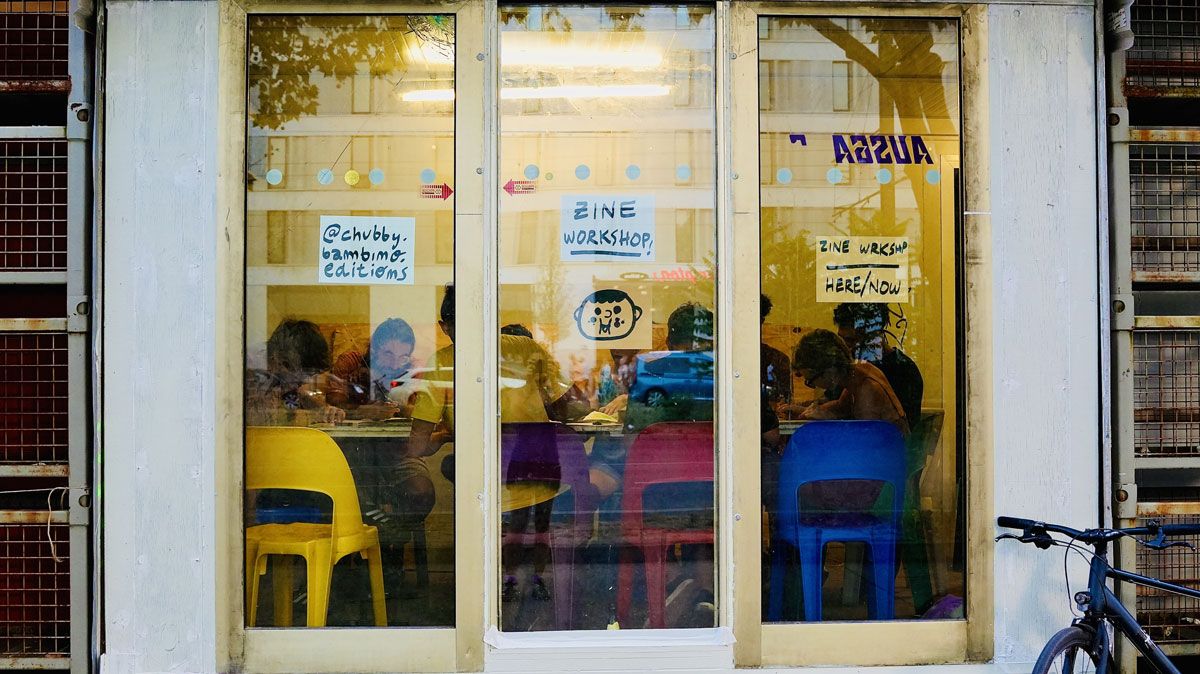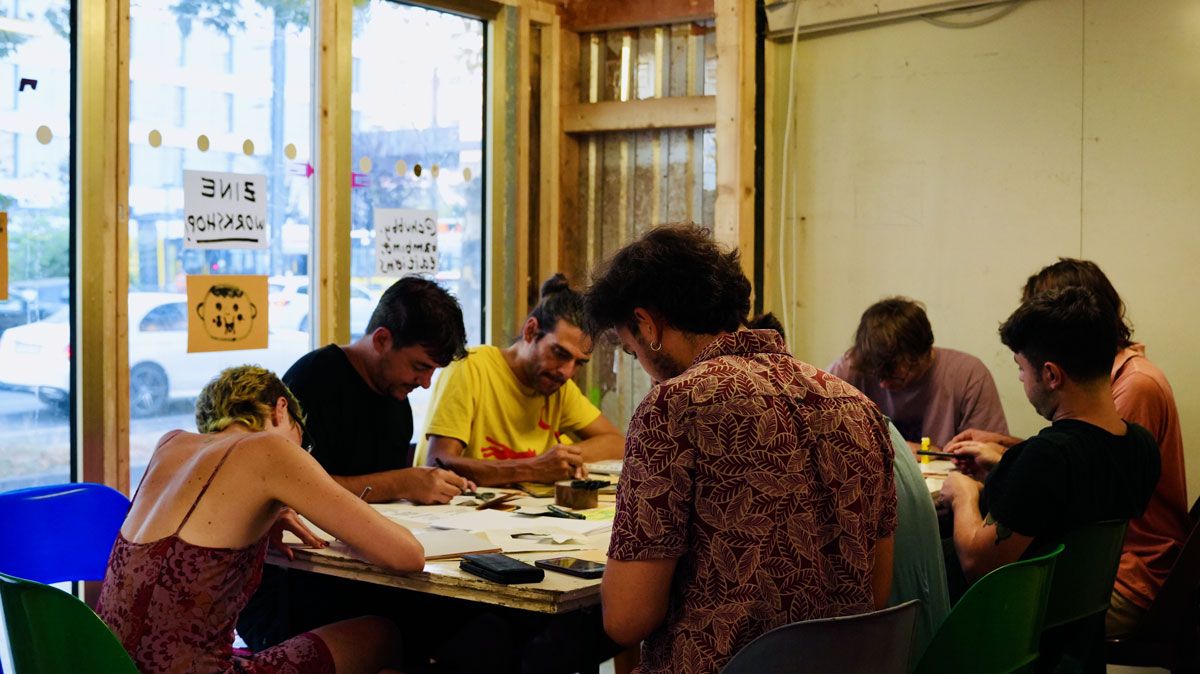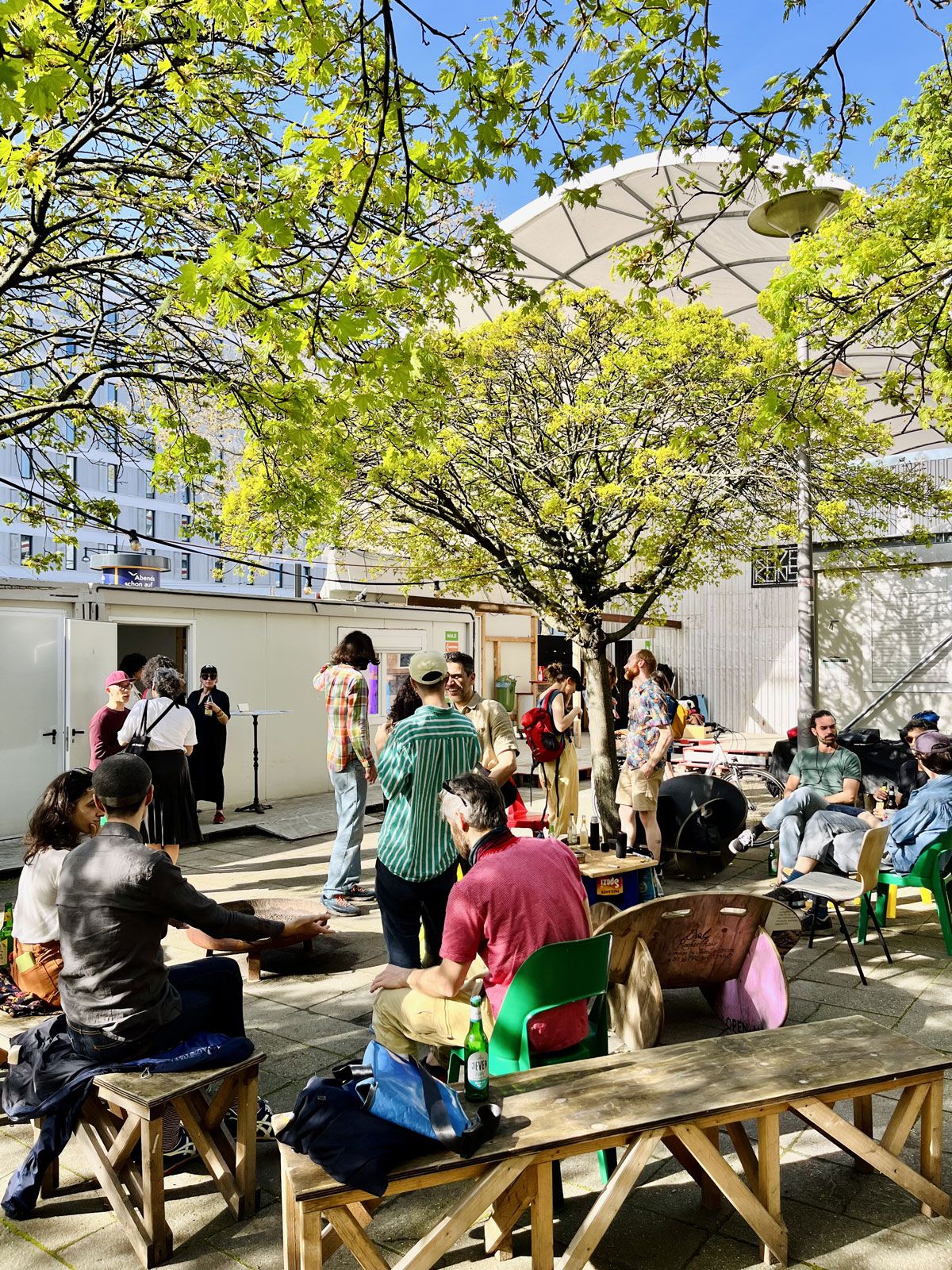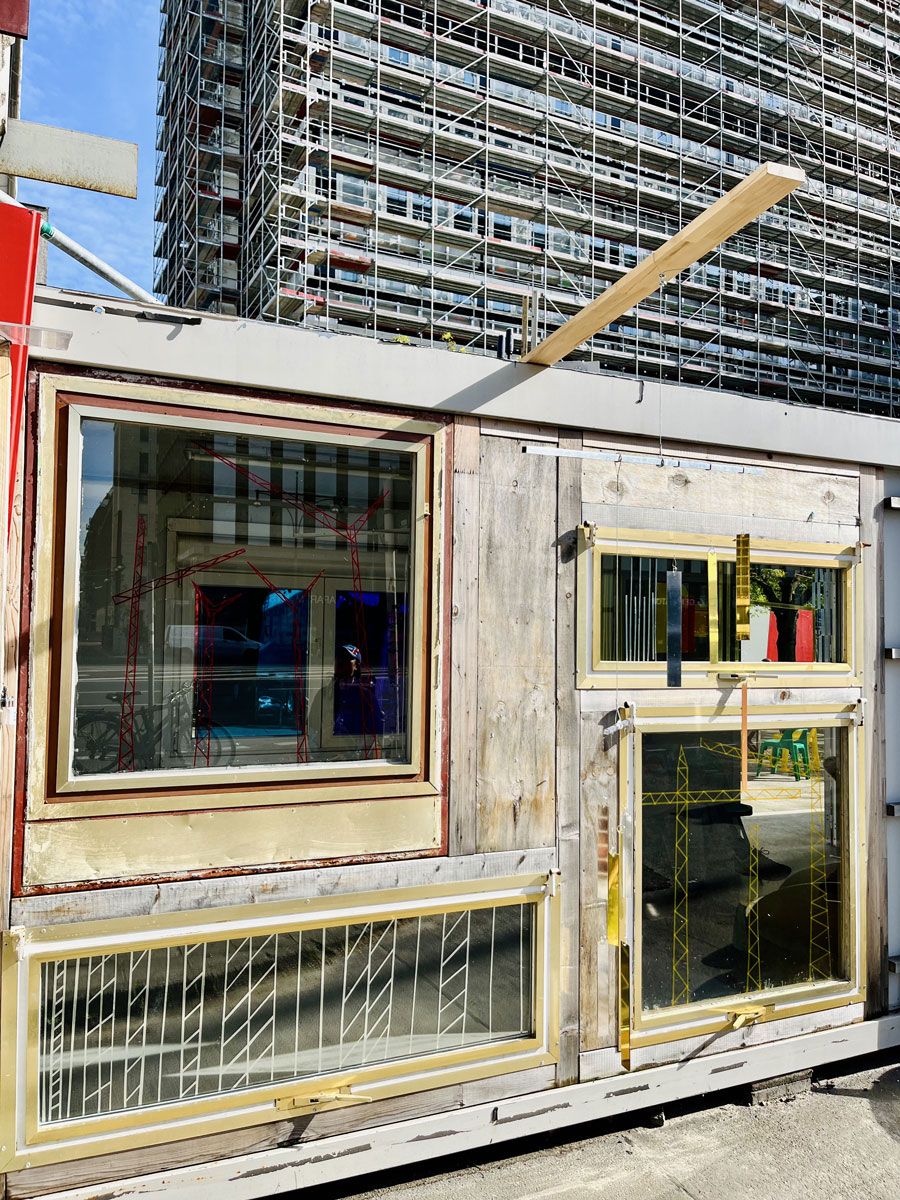Co-Making Matters is a Berlin-based platform currently located in the historic Haus der Statistik. In the following contribution, Viviane Tabach and Nicole Candian share the lessons learned on the self-organized and cross-disciplinary program of exhibitions, workshops, and events. The following text relates the current challenges faced by independent and self-funded spaces, with a focus on how to work while embracing chaos as an intrinsic part of collaboration.
Embracing Chaos in Co-making
What does it mean to embrace chaos in a collaborative project? For us at Co-Making Matters, it’s not about romanticizing unpredictability but about navigating it — acknowledging cracks and disruptions as inherent parts of the system, not flaws to fix. In this reflection, we explore what it means to co-create within a platform designed for experimentation, collaboration, and adaptability, especially when resources are scarce and the rhythm of life resists our best-laid plans.
Co-Making Matters is a multidisciplinary platform based in Berlin. It fosters collaborations among practitioners across disciplines, offering space for exhibitions, discussions, and hybrid events. It operates through a framework of making, collaborating, hosting, and linking, with an emphasis on cross-disciplinary exchange and open communication. Yet behind this structure lies a constant dance with chaos — unpredictable circumstances, shifting needs, and the perpetual challenge of balancing ambition with available resources.
At its core, Co-Making Matters is about sharing resources and creating together. In theory, it’s a simple concept: a space where people meet, collaborate, and experiment outside of rigid capitalist structures. In practice, however, it can be messy, exhausting, and full of challenges. How do we stay curious about others, and remain open to the unknown within each artistic project while figuring out the best way to conduct and develop this platform sustainably?
Located in the historical Haus der Statistik in former East Berlin, Co-Making Matters operates in a city shaped by creative freedom, relentless gentrification, and current political uncertainty. The building itself, once a bureaucratic hub, is now a symbol of reclaiming space for communal projects.
Working in the cultural and artistic sector often means navigating constraints, unpredictability, and the unknown. While we’re familiar with these challenges, we’ve come to see how different collaborations shape whether these dynamics feel supportive or harmful. Coming from Brazil, where systemic precarity often defines working relationships, we are no strangers to chaos. Yet, this familiarity doesn’t necessarily make it easier. Instead, it deepens our ambivalence. We trust our ability to achieve much with little, but we also recognize the danger of normalizing this precarity — of celebrating resilience while reinforcing unsustainable conditions.
Running a collaborative project without financial support introduces specific pressures: fragmented time, energy drained by side jobs, and the constant pull of capitalist demands, even in spaces designed to resist them. The irony is glaring — how do we create outside capitalist norms while relying on them for survival?
This tension forces us to be intentional about our boundaries and resources. Collaboration isn’t just about producing together; it’s a radical act of showing up for one another despite the odds. Embracing chaos means acknowledging it, coexisting with it, staying true to your commitments, and finding ways to create something beautiful. Collaborative projects are deeply tied to the context in which they unfold. Each environment shapes the spectrum of chaos we navigate and how those conditions either support or hinder our ability to collaborate meaningfully. This year, we’ve asked ourselves: How do we balance the workload, create alternative economies, and ensure that our collaborations remain fulfilling rather than surface-level?
In the search for clarity in the mess by documenting the process, a significant focus for us this year has been vivid archives — not just collections of images and videos but dynamic reflections on how we operate, as well as the experiences shaped through each collaboration. However, capturing the “how” of Co-Making Matters is a challenge. Every project brings a unique set of expectations and requirements, and documenting these nuances takes time and care. Yet this process is vital. It helps us reflect on our evolving practices and create a space where collaborators feel welcomed into the complexity of what we do. These notes have helped us craft a living document we call "Welcome Notes”, which we share with collaborators before their projects begin at Co-Making Matters. It outlines expectations, invites dialogue, and creates a shared foundation for each interaction.
Lessons from Chaos:
Through trial and error, we’ve learned that life and collaboration reorganize themselves in motion. Here are some principles that have guided us:
Honor rhythms and boundaries: Everything takes space. We must determine how much, how long, and with whom we want to share that space. By embracing fluidity, we can navigate these changes with integrity and imagination.
Create time for stillness: Active listening — to ourselves and others — requires time and presence. Collaboration flourishes when we hold space for both motion and stillness.
Expect the unexpected: Plans will change. People will cancel. Opportunities will arise unplanned. The question isn’t whether chaos will happen — it will — but how we respond to it.
Celebrate the fragments: Perfect collaboration doesn’t exist. What matters are the encounters, small victories, and seeds we plant along the way.
Together with the School of Commons and the Cohort 2024, Co-Making Matters aimed to explore how commons-based learning principles and methodologies can enhance cross-disciplinary cooperation in urban environments, fostering creativity and shared knowledge. Through collaborations, Co-Making Matters sought to investigate how temporary interventions and site-specific projects can create a sense of community and facilitate knowledge-sharing in diverse urban landscapes, with a focus on inclusivity.
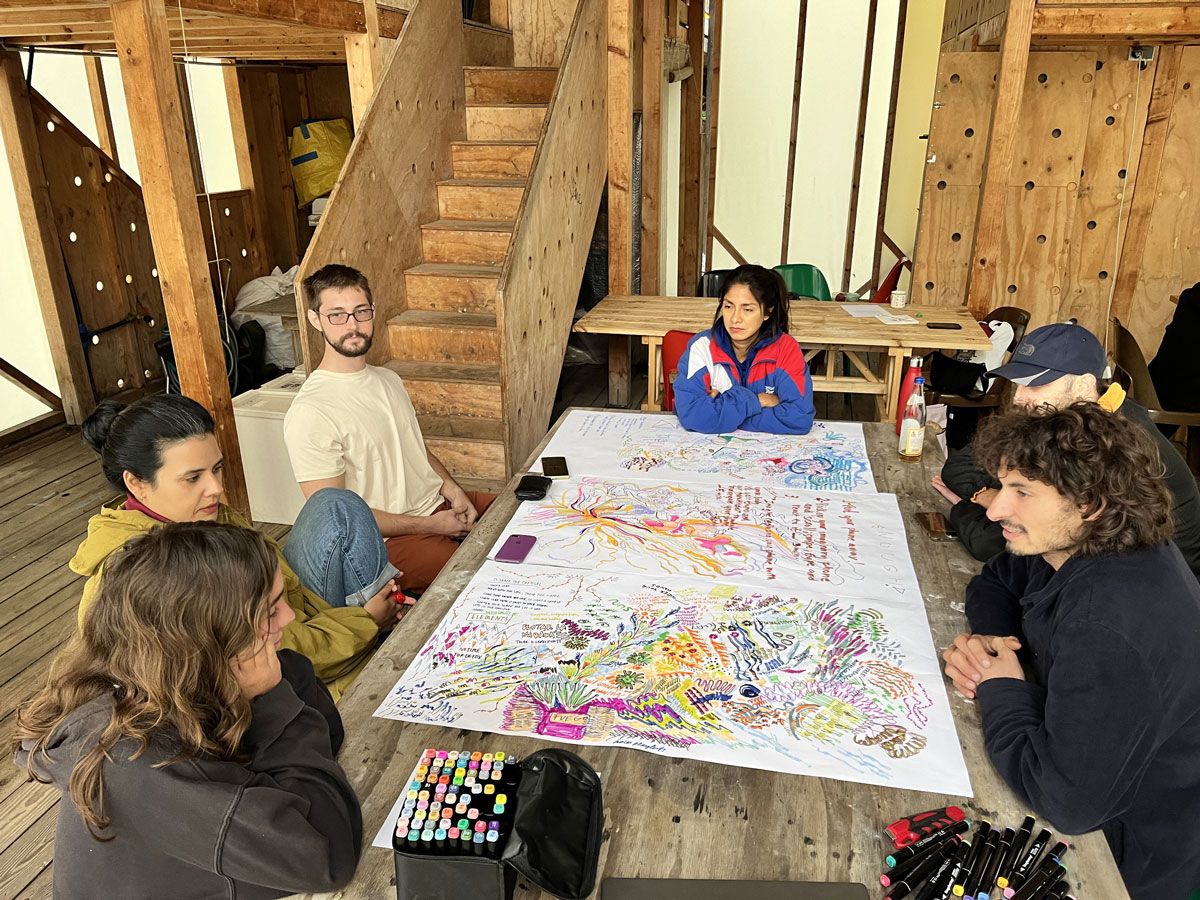
Exercises for the Digital Age, by Gabriel Hensche
Over the past months, we have hosted, collaborated, and created various projects with professionals across different fields. As a brief overview of some of them, we were part of the Free Radicals Residency at Floating in September. In this context, we brought together our team and many collaborators for a rhizomatic creation process. While the two-week timeframe could have been driven by speed, we instead grounded ourselves in a slower pace and focused on conviviality, rather than speed-driven production. We invited current and future collaborators to join us, developing the ongoing series Footnotes in collaboration with ReRouting. These sessions focus on sharing practices through collective exercises and experimenting with movement in the space. We also hosted the workshop Exercises for the Digital Age, facilitated by Gabriel Hensche.
More recently, we hosted the exhibition Pages of Ephemeral Chronicles, curated by Irina Denkmann, which showcased Ani Ba's sculptural works and performances using Lavash, traditional Armenian flatbread, as a medium. The project delves into themes of personal loss, Armenian cultural resilience, and the feminist roots of bread-making. Through tactile and visual narratives, it reflects on historical traumas and invites visitors to engage with the broader implications of cultural memory.
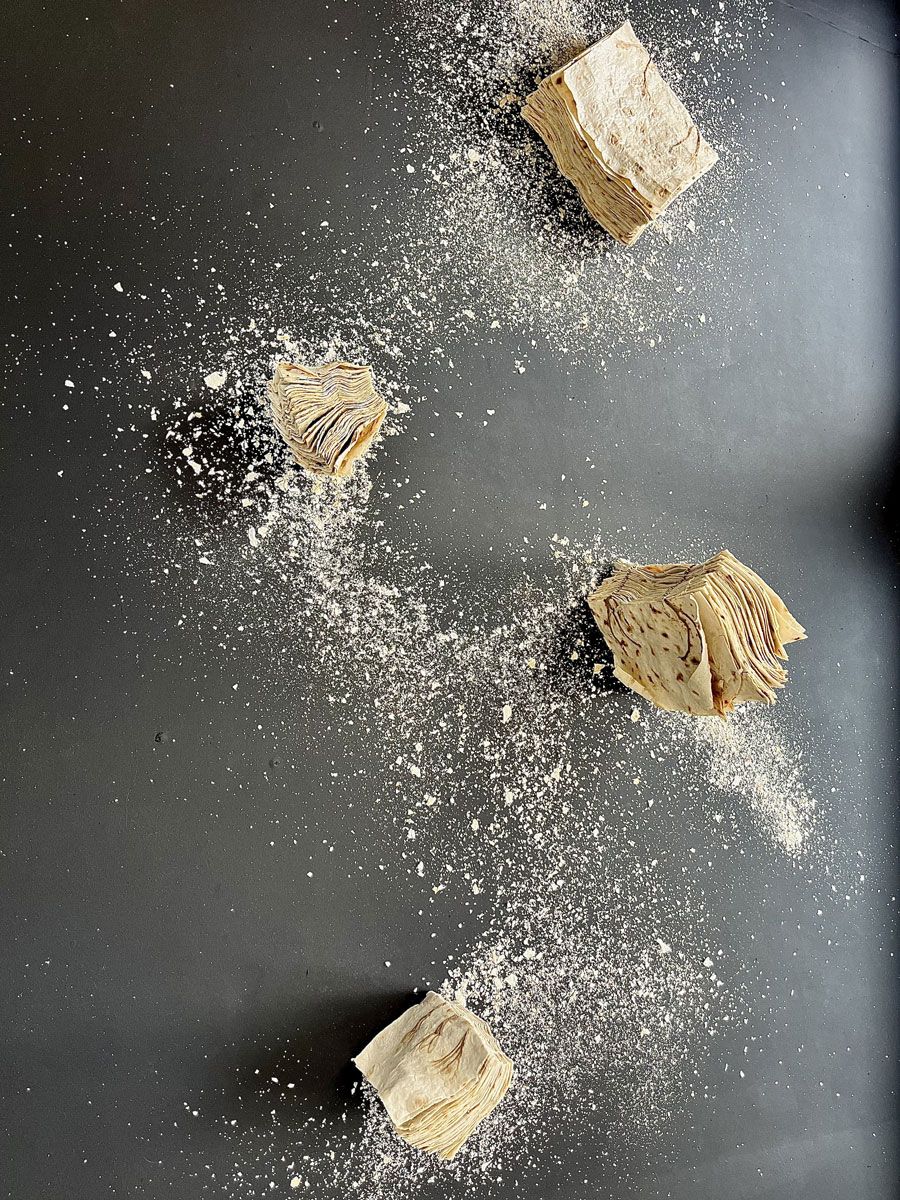
Pages of Ephemeral Chronicles
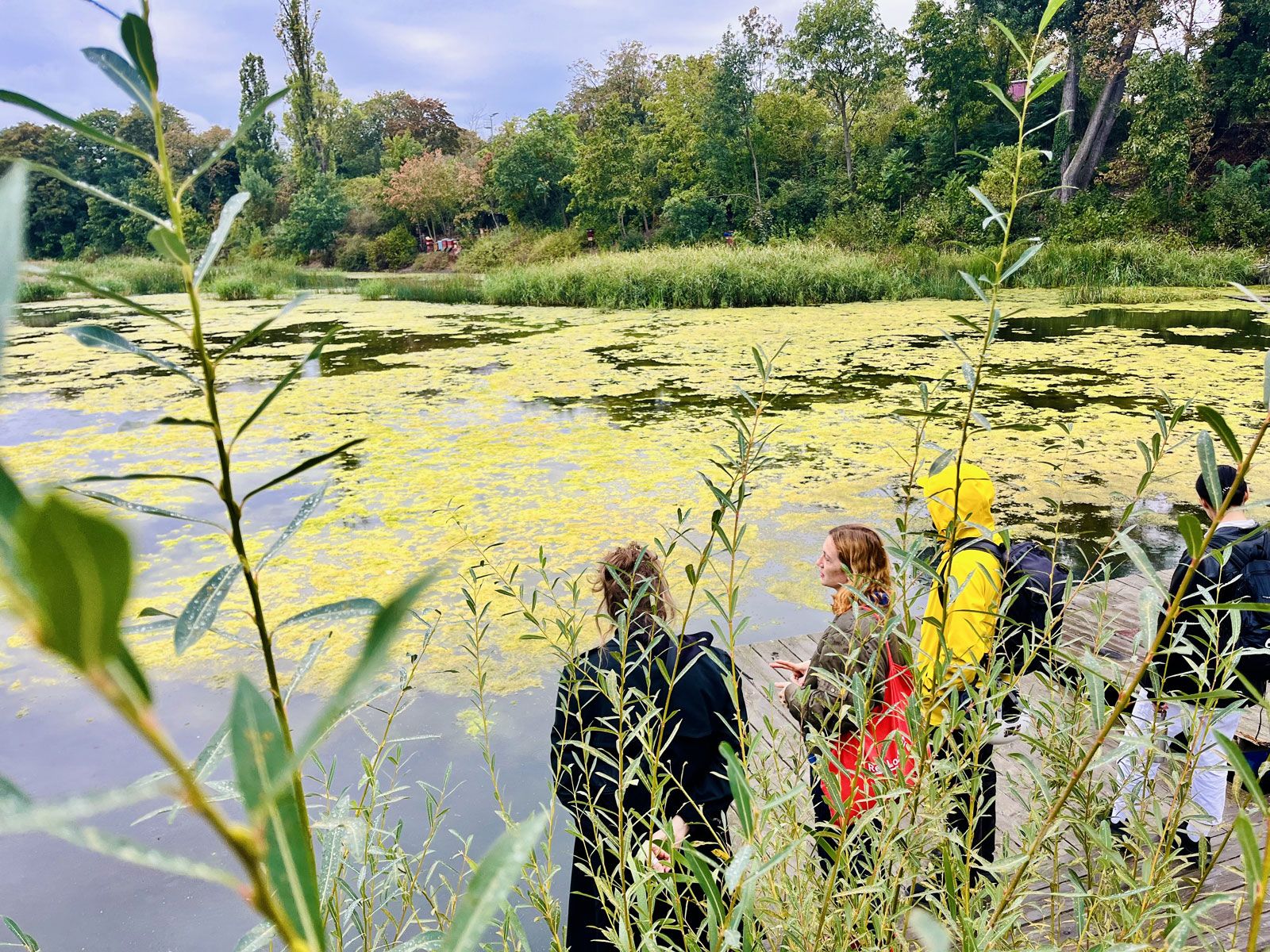
Footnotes in collaboration with ReRouting
Focusing on collective writing and playfulness, we hosted the ongoing project by Giuliana Kiersz, Another Possible Story: Feminist Reading and Writing Workshop; the game Das Spiel um die Große Platte, die Stadt gemeinsam bespielen by Cicadas Rhyme; and Chubby Bambino, who had a residency and created a brand-new publication, from concept to production. Instant Fiction, by Elaine Fontana, launched its call for participants in August, bringing together strangers to collaborate without relying on pre-existing bonds. The chosen space was conceived as a constellation of interconnected public spheres, where social, material, cultural, and other aspects intertwine to foster meaningful encounters and collective creation.

Another story... by Giuliana Kiersz
Our ongoing research on ecology and urbanism brought the artist Andrea Nhuch for a residency, where she presented Contamination Counseling Bureau, exploring contamination as collaboration. Acting as an eco-anxiety therapist, Nhuch engaged Berliners in reimagining co-existence with waste, addressing cycles of consumption, disposal, and the agency of non-human forces.
The exhibition Residual Flourishing, curated by Viviane Tabach, showcased Raquel Versieux and Silvia Noronha's investigation of soil degradation through artistic and ecological lenses. Transforming the space into a dynamic archive, the exhibition used waste and debris as materials to highlight soil heterogeneity and its regenerative potential. Lectures by Isadora Canela and Gabriela Leirias expanded the discussion on land, memory, and contemporary art.
The project What if...? A Transdisciplinary Discourse on the Future of Healthy, Green Cities brought together artists Klaus Bock, Lena Gätjens, Nicole Schuck, and Nilra Zoraloglu with scientists from various ecological fields to explore urban nature. Curated by Robert Köpke, the collaboration merged artistic practices and scientific research, developing new narratives and alternative perspectives on ecological questions, and reimagining the future of green cities.
Berlin-based artists Gloria Jurado and Samuel Perea-Díaz presented a collaborative installation, The Value of M2, exploring the climate crisis, overproduction, and real estate speculation. They posed questions about how land value intertwines with Berlin’s debt, gentrification, and the broader climate crisis.
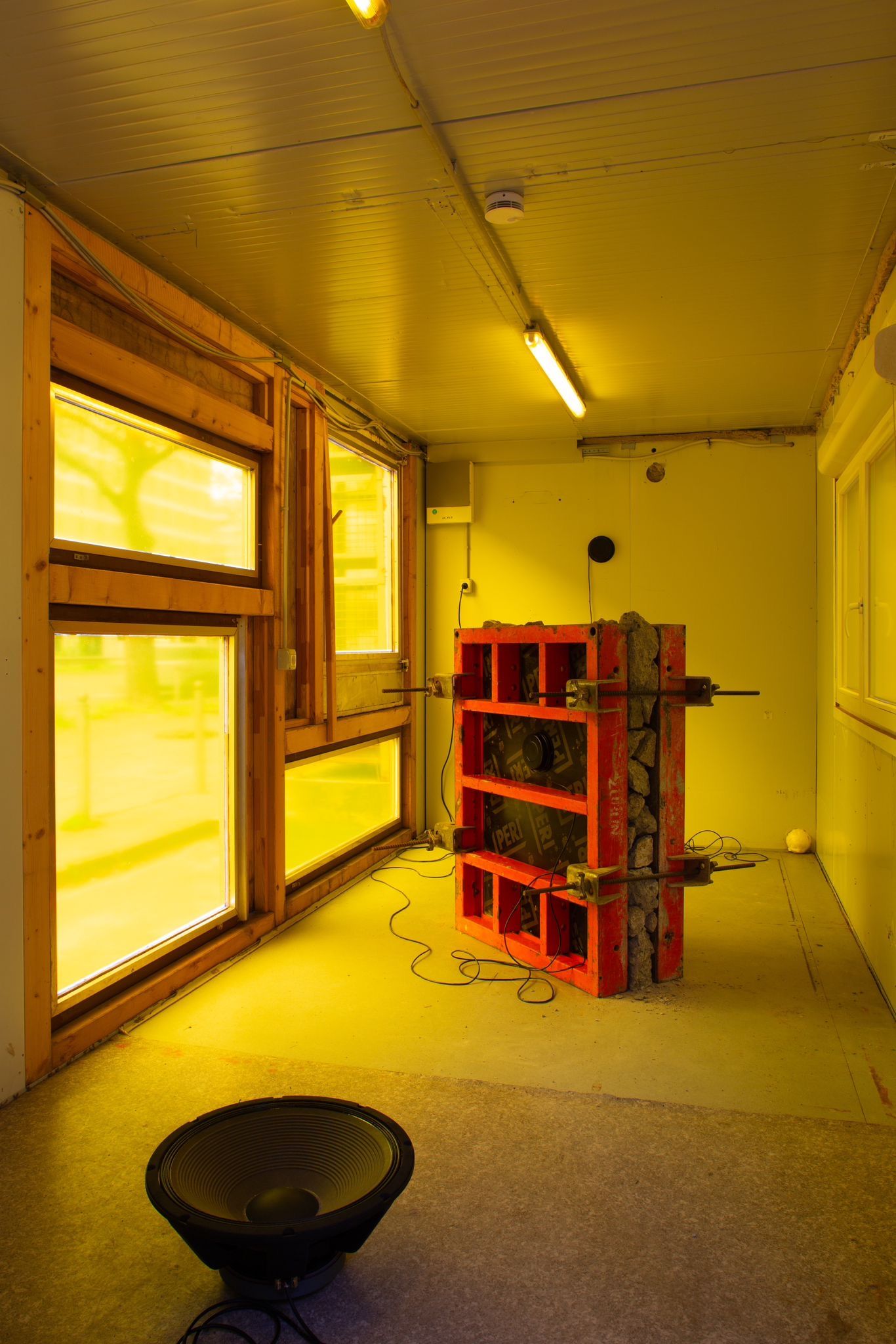
The Value of a M2, by Gloria Jurado and Samuel Perea-Díaz
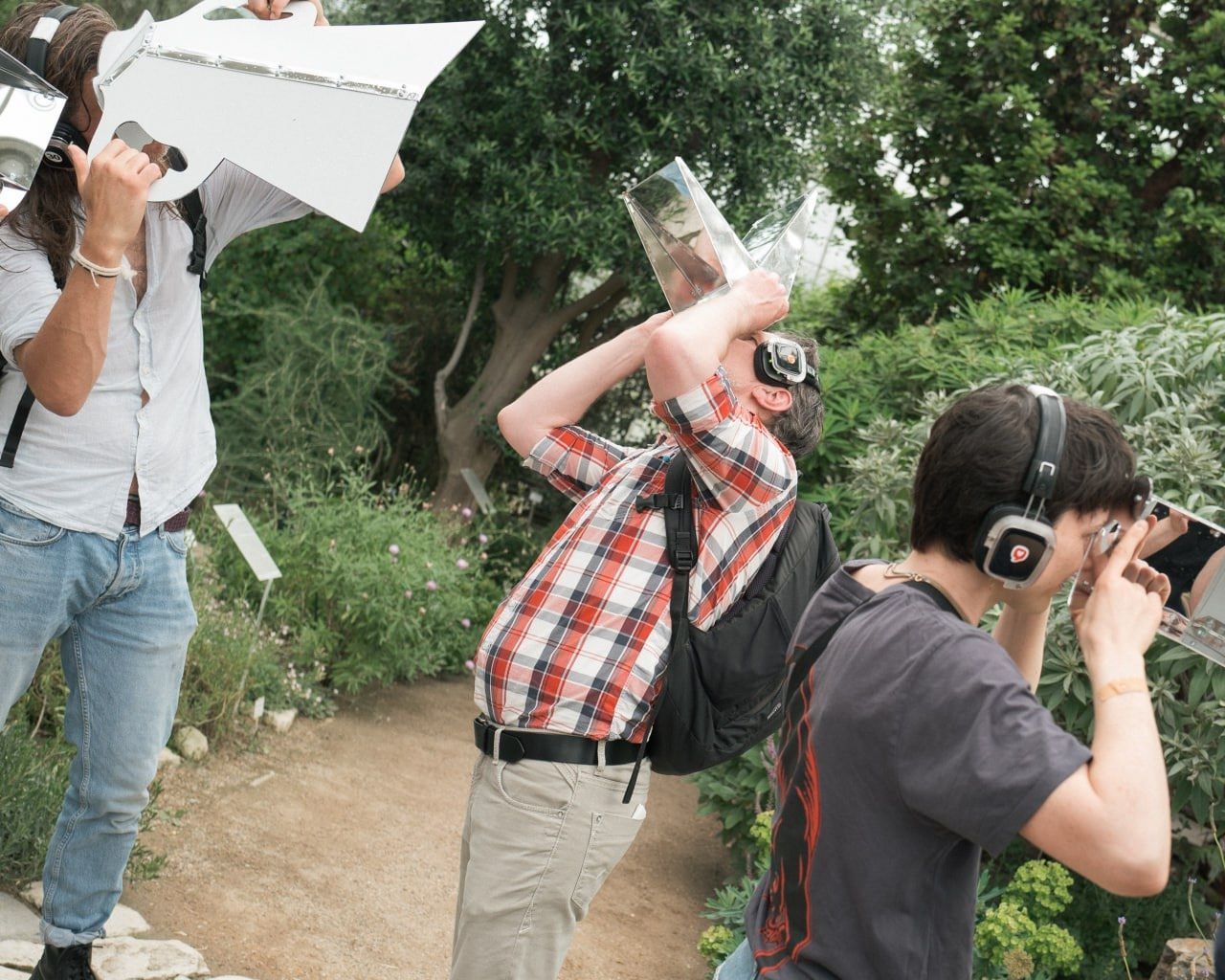
What if... A Transdisciplinary Discourse on the Future of Healthy, Green Cities Curated by Robert Köpke - PHOTO - Maximilian Koppernock
After a month-long residency at Co-Making Matters, Raquel Rosildete presented Nomadic Sun, an installation exploring the performative possibilities of sunlight. Her work brought the rhythm of nature to the city center, introducing the sun’s colors and narratives to spaces where they are often forgotten, even in its absence. Rosildete’s practice bridges theater and architecture, illuminating spaces and narratives with depth and resonance.
These are just some of the projects we have been developing. For more details, you can access our website www.comakingmatters.com. We are thankful to work with designer Anna Sukhova, who created the Co-Making Matters identity and many of our visual materials. Many things are currently being reformulated with her collaboration. We thank the School of Commons for sharing learning tools, space, and time with us and encouraging collaboration.
One question:
What does it mean to embrace chaos in a collaborative project?
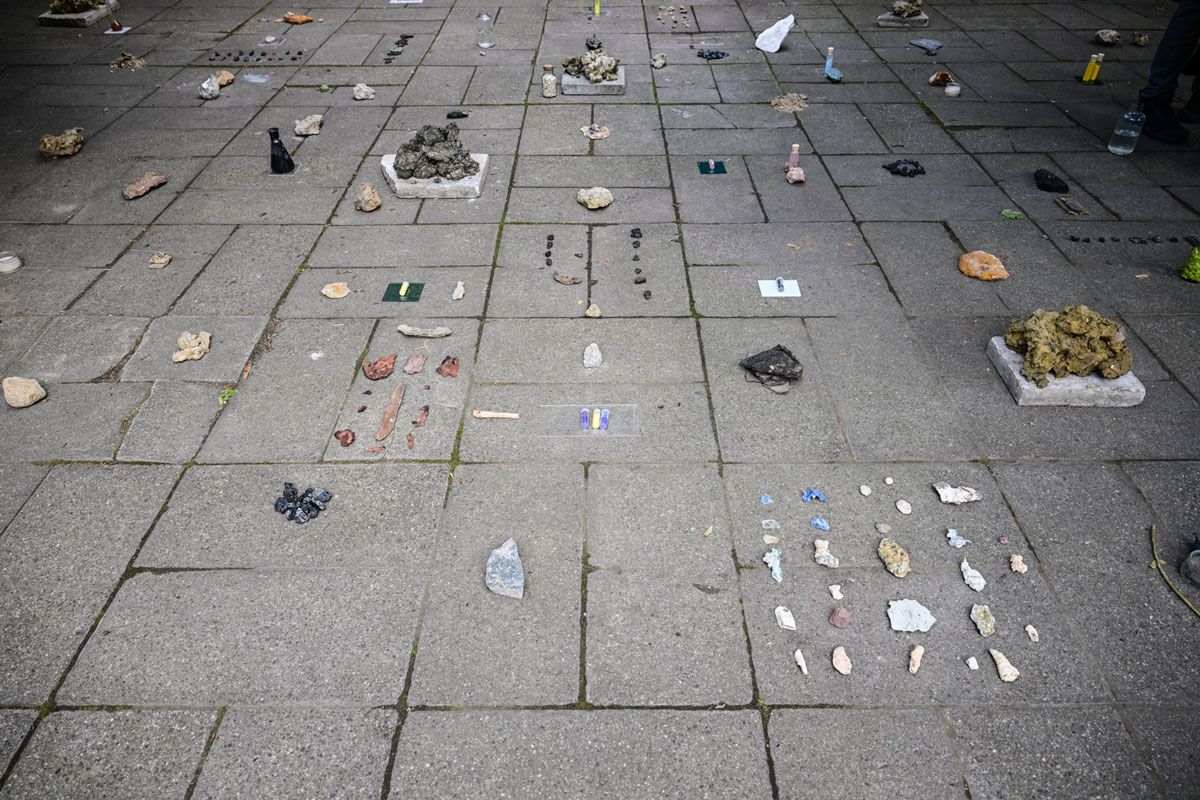
Residual Flourishing photo by Paula G Vidal
The ReRouting Project is an in-motion research initiative organised by curator Clementine Butler-Gallie who works in collaboration with cultural initiatives, groups and individuals dependent on the project. ReRouting is currently based out of Berlin, Germany, however, its structure is shapeshifting and its future destinations yet unknown. Together with Co-Making Matters, we have been hosting a series of Walking Residencies at Haus der Statistik. Learn more about the project on the website www.thereroutingproject.org
Co-Making Matters
A multidisciplinary platform located at Haus der Statistik that aims to foster collaborations and partnerships among practitioners from different fields.
Viviane Tabach
Viviane is a Brazilian curator, art mediator and artist.
Nicole Candian
Nicole is a Brazilian interdisciplinary artist and researcher.
